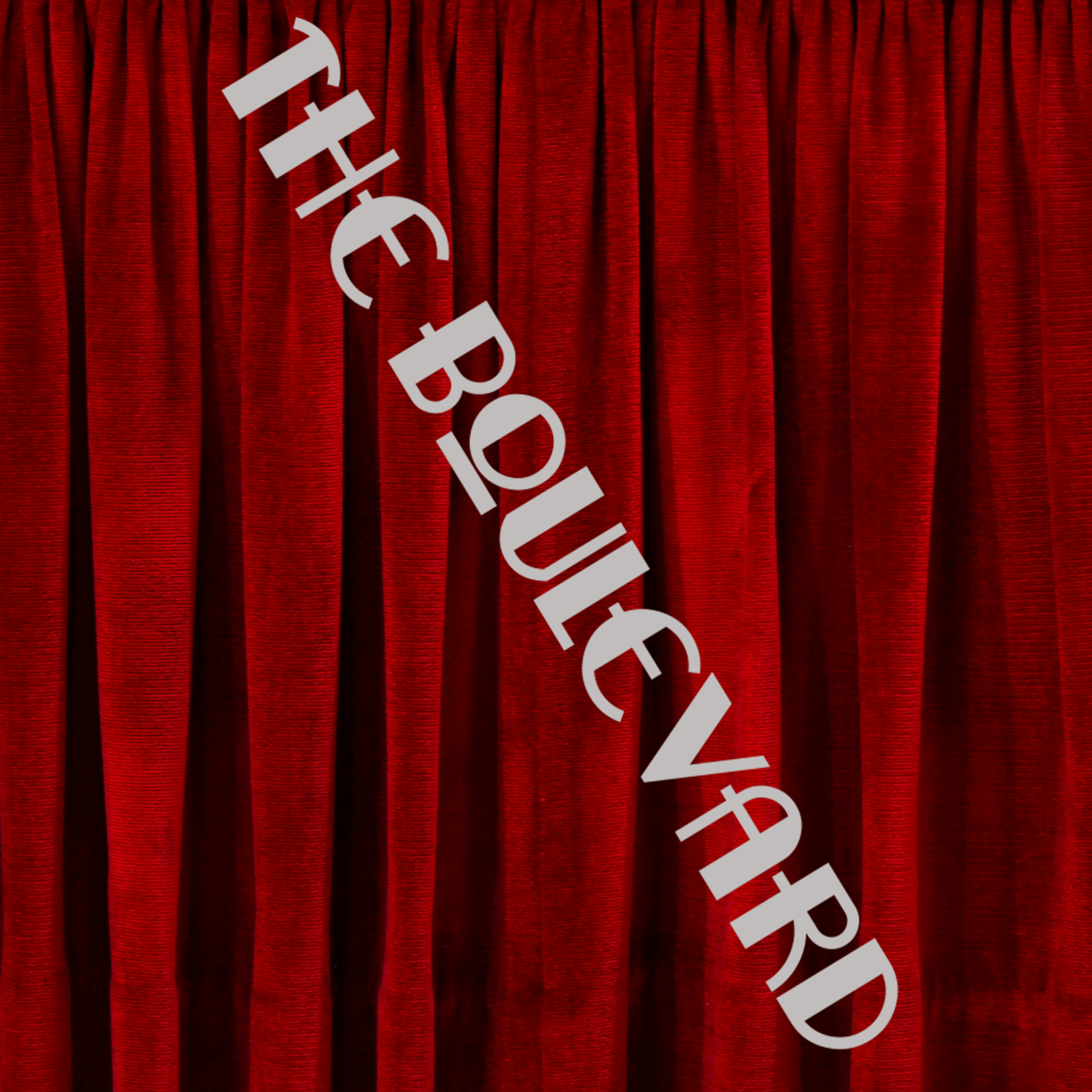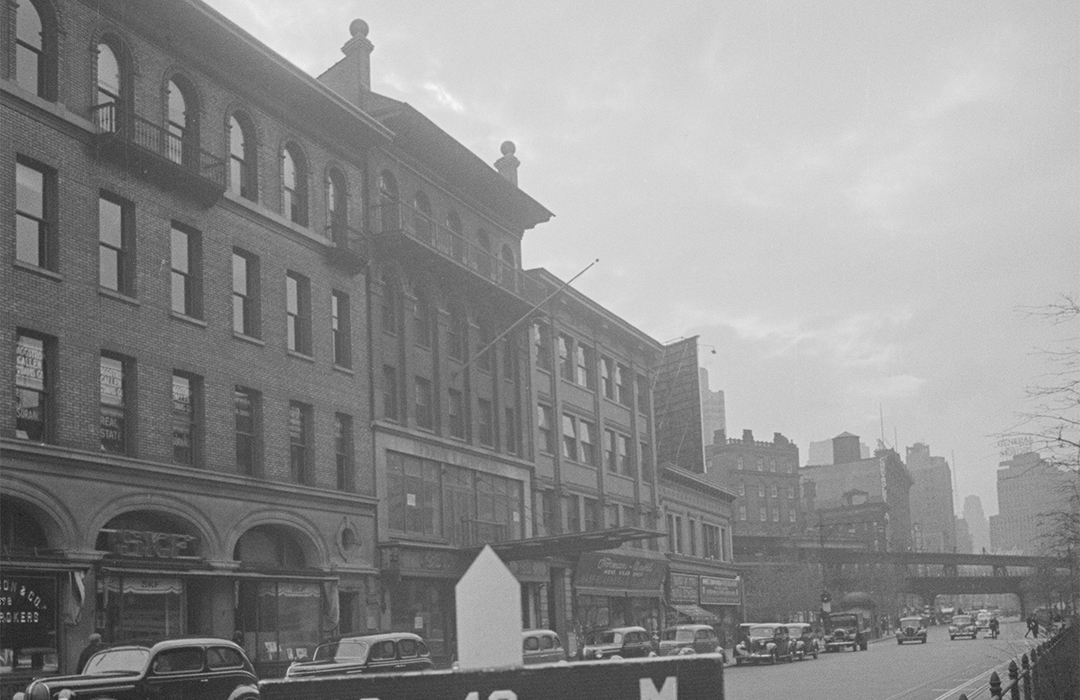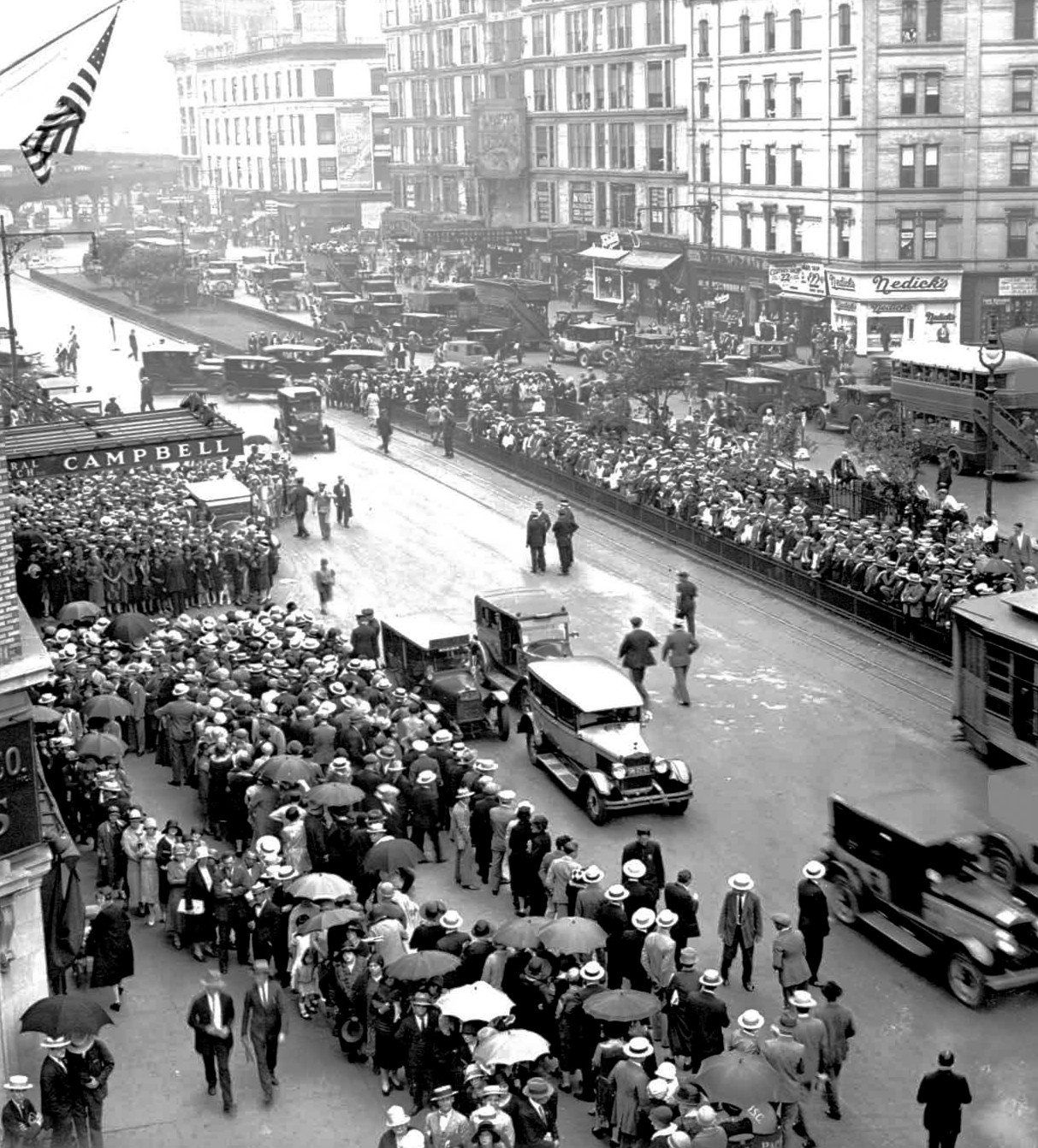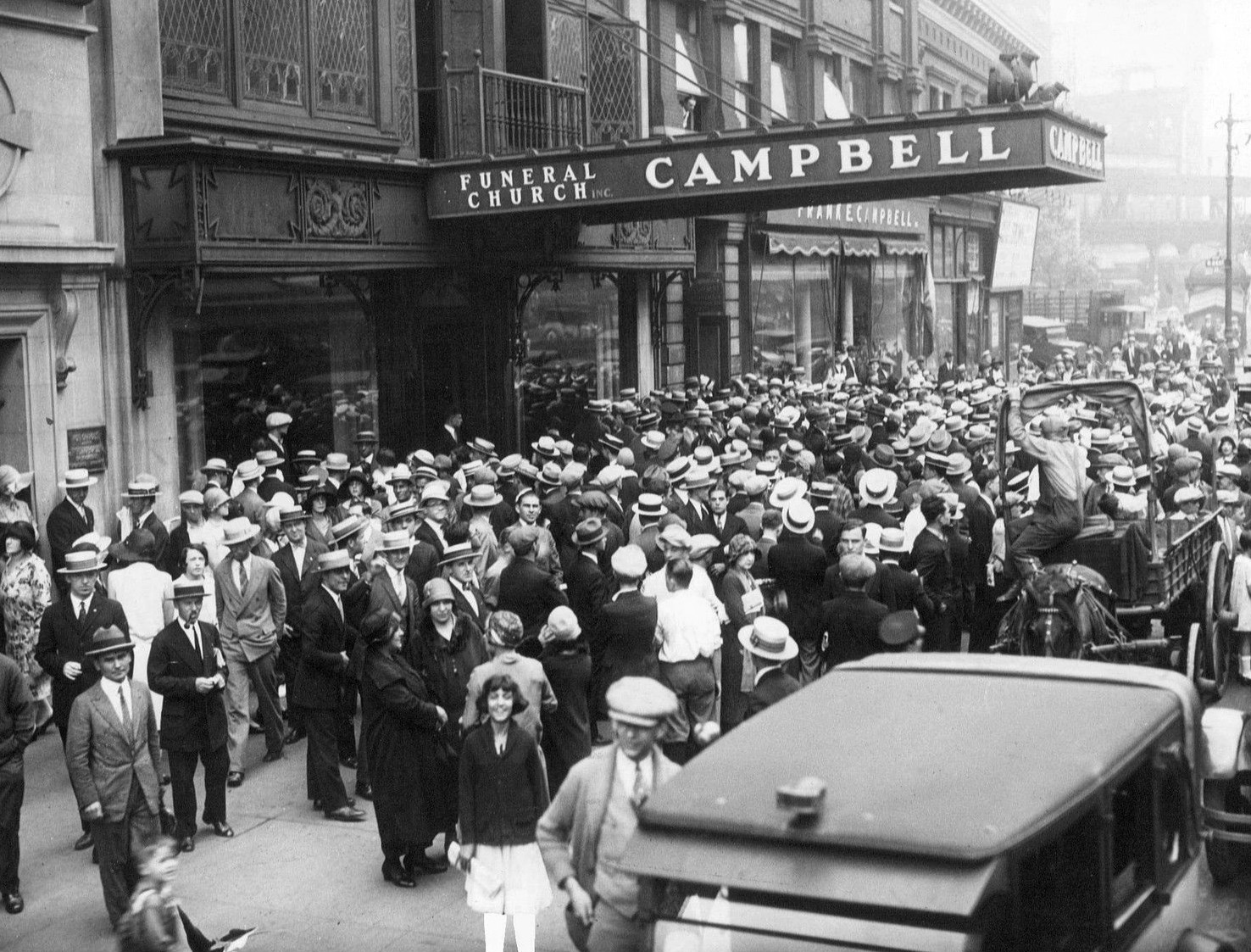
1970-1972 Broadway – Campbell’s Funeral Church
by Tom Miller
In 1892, two years after Madison Square Garden, their most significant commission to date, opened, the architectural firm of McKim, Mead & White completed plans for a five-story hotel midblock on the Boulevard (later Broadway) between 66th and 67th Street. Their Renaissance Revival design featured a full-width balcony at the fifth floor. The openings of the third and fourth floors sat within double-height arches, and the sloped roof terminated in a deeply overhanging cornice.
The building’s owner, J. W. Doolittle, leased it to the Sagamore Hotel Company, which operated the Sagamore Hotel until 1904. That year, the lease was taken by the Pabst Company, which changed the name to the Weldon Hotel. Like the Sagamore, the Weldon Hotel was an “apartment hotel,” meaning that few, if any, transient guests were accepted.
Change came in 1912. By now, Broadway north of Times Square was known as Automobile Row because of the number of automobile-related businesses along the stretch. That year, the first and second floors were converted for business, and the Akron-based Goodyear Tire & Rubber Co. opened its New York branch in the building. Its tenancy would be relatively short-lived. On May 9, 1915, The New York Sun reported, “As a logical step in its policy of selling only at wholesale, the Goodyear Tire and Rubber Company announces simultaneously the discontinuance of its retail store at 1972 Broadway, and the opening of a service station at 207 West Fiftieth street instead.”
…the Akron-based Goodyear Tire & Rubber Co. opened its New York branch in the building.
The new tenant could not have been more different than its predecessor. In October, the Record & Guide reported that 1970-1972 Broadway had been leased “to the Frank E. Campbell Company, funeral directors, now in West 23d street, for a long term…Plans are being prepared by Randolph H. Almiroty for alterations to cost about $125,000.” The significant renovations resulted in a “funeral church,” along with the various administrative offices, mortuary space, and such.
A moving service was held here at 2:30 on the afternoon of February 17, 1918. The Cunard steamship, the SS Tuscania, departed Hoboken, New Jersey, on January 24 with a crew of 384 and 2,013 United States Army personnel headed for England. On the night of February 5, a German U-boat torpedoed the ship, which sank into the Irish Sea within four hours. Approximately 210 of the troops and crew were drowned. A memorial service was held in the chapel, the announcement of which noted, “Soldiers, Sailors, the Public, Invited.”
A federal Department of Justice inspector staked out the apartment house at 7 East 39th Street for hours on July 9, 1918. Inside lived Pauline Hamilton, an artist who was “under suspicion of being a minor tentacle of that great octopus the German spy system,” according to the New York Herald. “She had been known to associate with pro-Germans.” As a matter of fact, she had been “a member of the household of the Kaiser” for seven years and had painted his portrait. As the investigator lurked about, a man suddenly “sped up the steps of the building and entered.” The inspector rushed in after him to discover “the reason for his visit,” said the article.
The man was A. B. Woolsey of the Frank E. Campbell funeral home. He was coming to visit Mrs. A. M. Libby, Pauline Hamilton’s sister, who had arranged for her funeral. Hamilton, said Woolsey, had died in the Flower Hospital the previous day and her body was scheduled to be cremated at 3:00. The inspector ran to a telephone. The New York Herald reported, “Within a short time Department of Justice men were at the funeral establishment.” The Board of Health was called, as well, in hopes to postpone the cremation and the funeral. “In short the Department of Justice wanted to satisfy itself that the woman in the casket was really Pauline Hamilton and not a substitute,” explained the article. At last, Pauline Hamilton’s body was satisfactorily identified, and the funeral proceeded.
In the meantime, the uppermost floors now held offices, including the headquarters of the Florists’ Exchange of America, here in 1919.
Frank E. Campbell’s funeral chapel was the scene of the funeral of many prominent and celebrated figures. None of them, however, was anything like that of motion picture idol Rudolph Valentino on August 24, 1926. The New York Times ran a headline, “Thousands In Riot At Valentino Bier; More Than 100 Hurt.” The movie star’s casket was open to public viewing that afternoon and evening. More than 30,000 people, mostly women, crushed onto the Broadway block. The surge forced policemen against two plate glass windows of the funeral home, which smashed, lacerating some of the officers. The New York Times reported, “In the judgment of the police on the scene, the rioting was without precedent in New York, both in the numbers concerned and in the behavior of the crowd…Time after time during the afternoon a dozen mounted policemen were forced to charge into the crowd, while women shrieked and yelled in terror and tried to scramble away from the horses’ hoofs.”
More than 30,000 people, mostly women, crushed onto the Broadway block.
In the aftermath, Broadway was littered with broken umbrellas, at least 28 women’s shoes, and battered hats and other belongings. The article said that in addition to the large plate glass windows, “damage was done to the inside of the Campbell place.”
At the turn of the century, Gutterman’s Funeral Home had taken over the space. It was the scene of the funeral of a different type of “celebrity” here on July 3, 1952. Bar owner Harry Oransky was the father-in-law of gangster Harry Gross. Until recently, he and other members of the Gross family had received police protection because of threats to their lives. On July 1, Oransky walked out of his bar to investigate the noises youths were making on the sidewalk. He was attacked and stabbed in the temple. On July 4, the Daily News reported, “Handcuffed to one detective and guarded by two others, boss bookie Harry Gross was driven yesterday in a bullet-proof limousine from city Prison to a Broadway chapel to attend funeral services for his slain father-in-law.” According to the article, his manacles were removed during the service.
The Gutterman Funeral Home moved to 331 Amsterdam Avenue around 1980. The McKim, Mead & White building sat empty for years. Then, on September 2, 1985, The New York Times reported, “Demolition crews have taken over the vacant five-story brick building…Ornamental work that once graced the arched windows on the fourth floor is gone.” The article lamented, “While the building may enjoy a notorious spot in cinema history, it is not a designated landmark.” The new owners, Lincoln Associated, demolished the venerable structure.
Tom Miller is a social historian and blogger at daytoninmanhattan.blogspot.com
BUILDING DATABASE
Keep Exploring
Be a part of history!
Think Local First to support the businesses at 1970 Broadway:




